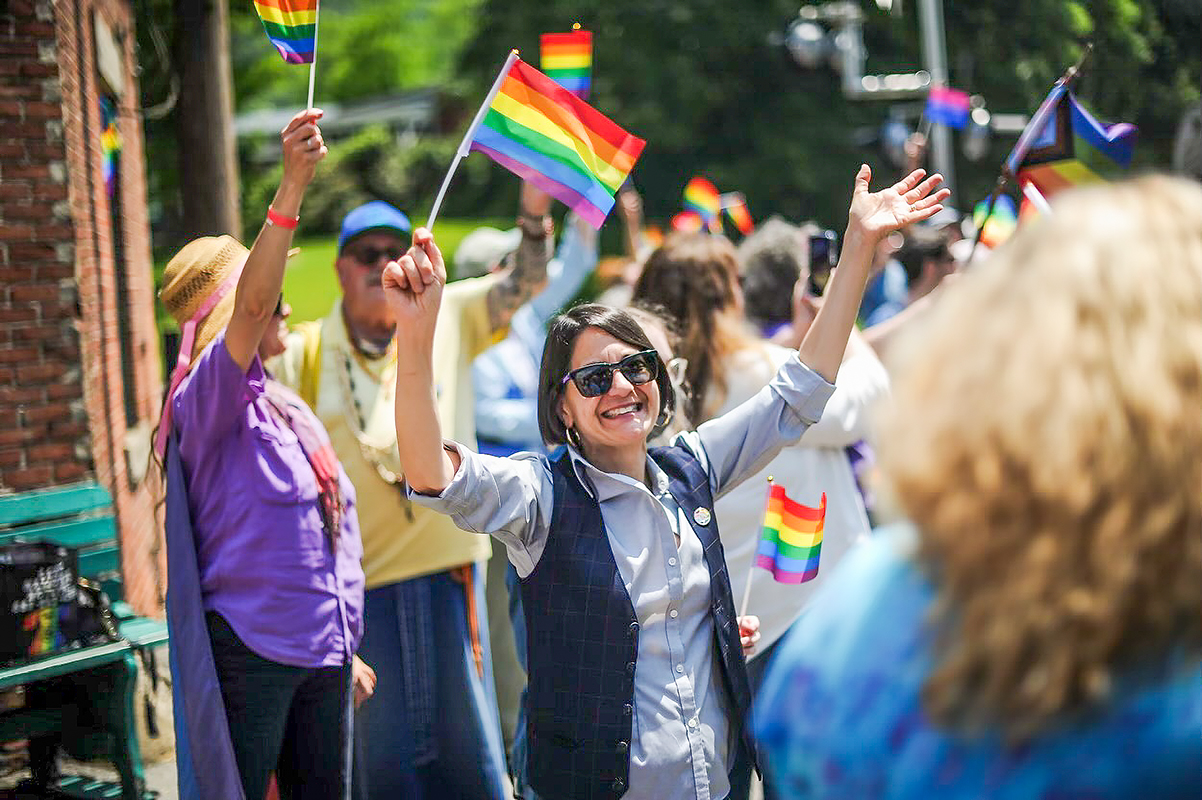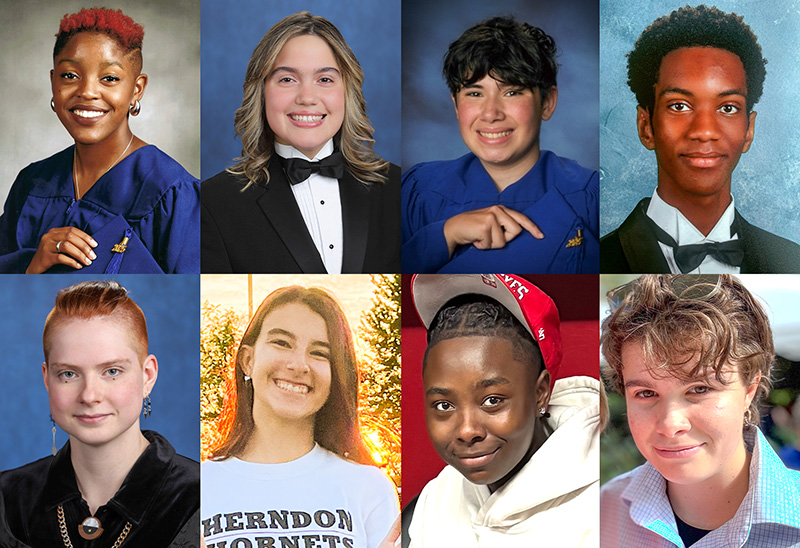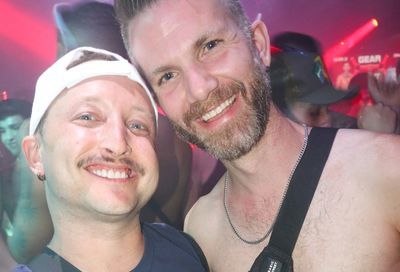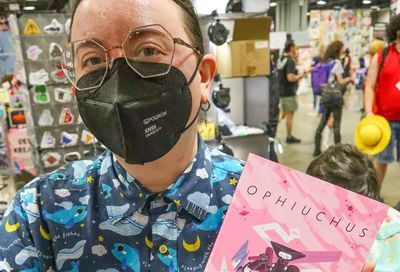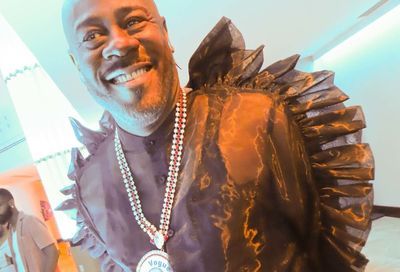Game Change: The State of LGBT Gaming
LGBT characters have played roles in three decades of gaming, but have never managed to reach ubiquity. That may be about to change.

I love being a gamer. The exhilarating feeling of loading up a new game, the potential new worlds and experiences awaiting me, the joy of wandering through a creation designed to entertain in some varying degree — gaming ignites more senses than art, music, film or television ever could. Pick up a controller and you’re transformed — save cities from destruction, forge paths through forgotten temples, wage war across continents, race supercars through exotic cities, throw angry avians at hirsute hogs, rescue a princess from a tyrannical turtle — all are possible through gaming. It’s escapism in a way we’ve never fully realized before, elevating a humdrum existence onto a plane where normal troubles are forgotten in Technicolor glory. Gaming can improve reflexes, stimulate aging brains, teach young ones, bring families together and provide distant friends a means of connecting and sharing in an activity together. Video games, more than ever, are clawing their way out from under the sneering and flippancy of those unwilling to actually play them. They’re not just for kids, they’re certainly not just a distraction. Gaming is, however, still very much not for gays.
Yes, of course, LGBT people play and enjoy games. Walk into a store or head online, and there are literally thousands of them waiting for your pink dollar. How many, though, specifically cater to that dollar? Very few. Unlike other forms of entertainment — film, television, music — gaming has no dedicated LGBT genre. Hollywood caters to those who want a rom-com or drama with two male leads. There are several gay-specific record labels. Gay and lesbian television viewers have multiple programs — and even dedicated channels — catering to a gay audience.
Video games, though, have very few such options. Make a list of all the games you’ve played or know of that feature gay characters, or openly discuss LGBT issues. How many can you name? Compare that with Logo TV, which has created 40 original programs since it started — and that’s just one niche LGBT network. The actual number for LGBT characters is surprising, as they’ve existed in games since 1986’sMoonmist, a text adventure widely regarded as the first major video game containing a gay character. Gay, lesbian, bisexual and transgender or transvestite characters have played both major and minor roles for three decades of gaming, but, unlike other entertainment forms, have never managed to reach ubiquity. As society has slowly evolved to accept LGBT people, games have followed at an even slower pace.
When included, LGBT characters have often been stereotypes. In 1993’s Police Quest: Open Season, a police officer is investigating the murder of his partner and, visiting a gay bar, learns that his partner led a secret life of cross-dressing. Blade Hunter, protagonist of 1990s Rise of the Dragon, hits on a woman who transpires to be a long-haired man, which leads Blade to worry that his nickname will become “Switch Blade.” Michael Doi in Bust a Groove 2 is a flamboyant gay dance instructor — and that’s the extent of his characterization.
Censorship based on sexuality was rife, too. Japanese games have long been more liberal in their inclusion of LGBT characters, but many of them had any sexual themes removed for Western distribution. Birdo, perhaps the most famous transsexual in videogames, was openly referred to as a transgender female in Super Mario Bros. 2, but any such reference was removed by Nintendo for Western release. Indeed, Nintendo and Sega, its biggest rival, spent most of the ’80s and ’90s removing gay themes from games. Dragon Warrior III had a gay bar removed for NES release, while the Western release of Phantasy Star II for the Sega Genesis edited the sexuality of a music teacher down to the point that it was only hinted at when he charged male clients less for music lessons. Hardly a vocal endorsement of gay characters.
Throughout the ’90s and into the 21st century, LGBT representation has been a continual mixed bag. Rockstar’sGrand Theft Auto: Vice City featured construction workers dressed like their representative in the Village People, who shouted quotes from “YMCA” and “In The Navy.” They followed this with Grand Theft Auto: San Andreas, whose police force made statements such as “Drop the soap, Honey” and “I’m on your ass, Daisy,” while a pink dildo that can be used as a weapon is only found in-game in the police station shower room. There are no female police officers, so we can only assume that shower-time in San Andreas is very steamy.
Rockstar then contradicted itself in the sequel, Grand Theft Auto IV. One character, French Tom, is an effeminate gay man who Nico, the player’s character, must kill as part of a mission. His sexuality has nothing to do with his murder — he owes money to another character — but it’s an offensively stereotypical portrayal of gay men in a hyper-masculine world. However, he isn’t the only gay character. A later mission involves finding and killing a man named Florian. He transpires to be an old friend of Nico’s, having served in the military with him, who has come to Liberty City – GTA IV‘s New York City parody — to restart his life as an out gay man. He convinces Nico that he should be looking for another person, and the two rekindle their friendship. Florian is even more effeminate than Tom, yet Nico not only befriends him, but protects him from murder in later missions. Rockstar doesn’t present anything more than a gay stereotype to players, but it does so in two very different ways.
When developers do include LGBT characters, the reaction can often be inflammatory from gaming’s male, heterosexual majority. Troika Games’ The Temple of Elemental Evil featured a gay character who could be rescued and married by the protagonist. As it was 2003, it ignited controversy among straight gamers who resented the inclusion of the content — despite same-sex marriage being optional. In an interview with RPG Vault, lead producer Tom Decker defended the game, saying, “I particularly felt strongly that since we had several heterosexual marriages available in Hommlet, we should include at least one homosexual encounter in the game … and not to make it a stereotyped, over the top situation, but on par with the other relationships available in the game.”
The negative reaction of gamers clashes with 2004’s Fable, which took an entirely laissez-faire approach to homosexual and bisexual relationships. Though its protagonist was male, it was entirely possible to romance and marry either male or female characters. Homosexuality and bisexuality are normal within the game, and should a player choose to romance both genders or just one, their sexuality was reflected in an in-game status. Creative director Dene Carter, speaking with Gamasutra, said that the inclusion of such relationships wasn’t intended to be a statement. “It was not so much a question of overt inclusion as a reluctance to remove something that occurred naturally in the course of creating our villagers’ artificial intelligence.” Most surprising was the lack of controversy around the game’s gay content, though Carter wasn’t as shocked. “This seems entirely logical; in Fable, if you don’t agree with playing as a gay man, or gay weddings … you don’t play as a gay character. Simple, really.” It was a refreshingly honest approach that is still something of an anomaly in today’s video games.
That’s not to say that we haven’t had at least a few developers waving the rainbow flag. Ask any gay gamer what their first experience of gay or bisexual character in gaming was, and I’d be surprised if a sizable portion don’t answer with The Sims. The life simulator from Maxis is an incredible game, filled with minute details and controls over your in-game character, their life, and their family should you choose to have one. In 2000, the original Sims title hit retailers, and gay and lesbian relationships were possible. Characters could move in with one another, whether same-sex or heterosexual, and adopt and raise children. Expansion game Livin’ Largeintroduced the Vibromatic Heart Bed, which allowed one Sim to lie in bed and invite another to join them. It didn’t show anything graphic — merely rustling under the covers — but it was an important step in interacting with a same-sex relationship. The Sims 2 followed in 2004, with the possibility for same-sex couples to form joined unions, distinct from heterosexual characters who could enjoy in-game marriage. In 2009, The Sims 3pre-empted most American states and granted marriage equality to same-sex couples, and if expansion packGenerationswas purchased, same-sex teens could go to the prom together. Sure, it’s just a game, but for a closeted youth, being able to control an idyllic gay life free from discrimination could be an escape from reality — especially as they come to terms with being gay, lesbian or bisexual.
Bioware, arguably, has the greatest record of any major game developer in their approach to gay or lesbian characters. In 2005, Jade Empire gave players the choice between a male or female protagonist, with both able to romance either men or women. Mass Effect, in its 2007 release, quite famously included Liara T’Soni, an un-gendered alien who appears feminine and who can be romanced by the protagonist regardless of whether the player chooses to be male or female — the end result being a very quick, tasteful cutscene in which it is made clear that the characters are having sex. That relationship, as well as the two other heterosexual romance options available, were lambasted by neoconservative blogger Kevin McCullough, who ranted that “Mass Effectcan be customized to sodomize whatever, whomever, however, the game player wishes,” even claiming that rape was possible. It was not, and the extent of Mass Effect‘s raciness was two glimpses of Liara’s buttocks — hardly enough to warrant the attack. Two sequels followed, with the first allowing for a female protagonist and a female character to romance, and the latter sequel allowing for both male and female protagonists to romance either sex.
Bioware’s 2009 release Dragon Age: Origins went further still. Again, either a female or male protagonist could be selected, and both could romance either men or women. But both have the possibility for casual encounters as well as full relationships — with cutscenes briefly showing sex, regardless of orientation. Similarly, both male and female prostitutes could be engaged in Dragon Age II. A small, yet vocal minority of gamers claimed that straight males were being marginalized by the inclusion of same-sex relationships, but Bioware’s David Gaider refuted such claims on the company’s website, stating, “The romances in the game are not for ‘the straight male gamer.’ They’re for everyone. We have a lot of fans, many of whom are neither straight nor male, and they deserve no less attention.” He concluded with, “And the person who says that the only way to please themis to restrict options for others is, if you ask me, the one who deserves it least. And that’s my opinion, expressed as politely as possible.”
Bioware, Maxis and other developers who include positive gay role models are still very much in the minority. For every major release that includes a same-sex relationship or a transgender character (see Japan for the latter, as it’s virtually non-existent in Western gaming), there are hundreds of others depicting gay stereotypes or simply ignoring LGBT characters altogether. For someone struggling with their sexuality or their gender, there’s very little that gaming can currently offer to make them feel “normal” or accepted.
Support Metro Weekly’s Journalism
These are challenging times for news organizations. And yet it’s crucial we stay active and provide vital resources and information to both our local readers and the world. So won’t you please take a moment and consider supporting Metro Weekly with a membership? For as little as $5 a month, you can help ensure Metro Weekly magazine and MetroWeekly.com remain free, viable resources as we provide the best, most diverse, culturally-resonant LGBTQ coverage in both the D.C. region and around the world. Memberships come with exclusive perks and discounts, your own personal digital delivery of each week’s magazine (and an archive), access to our Member's Lounge when it launches this fall, and exclusive members-only items like Metro Weekly Membership Mugs and Tote Bags! Check out all our membership levels here and please join us today!




